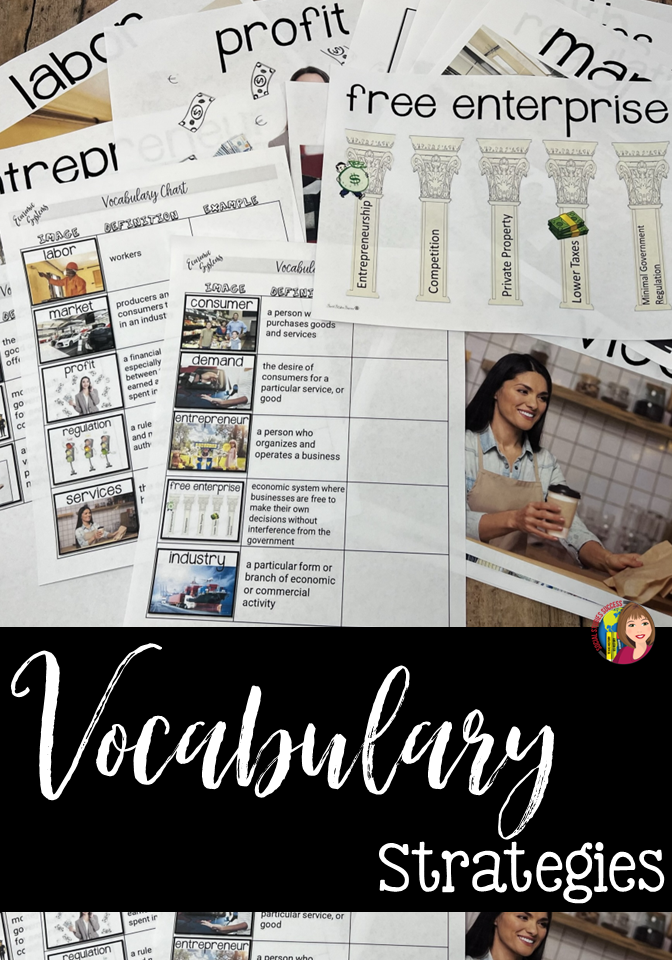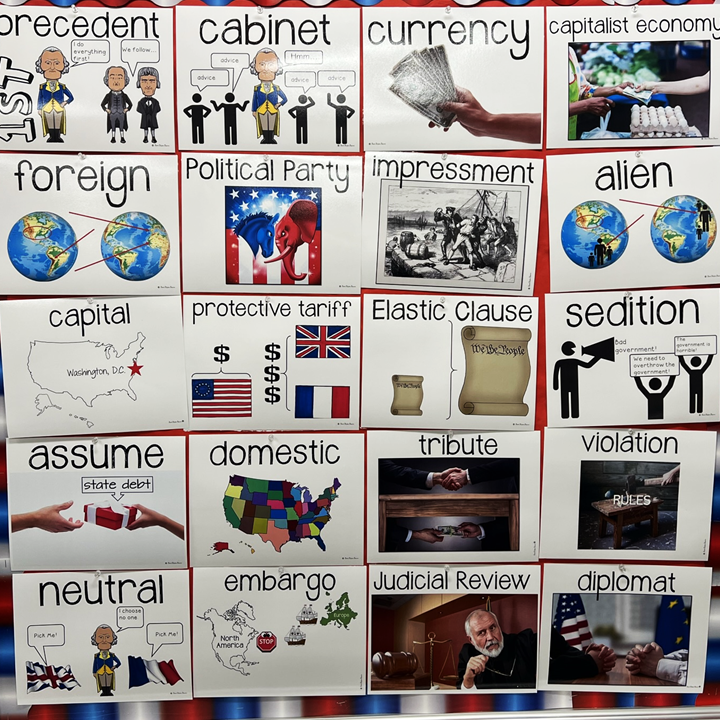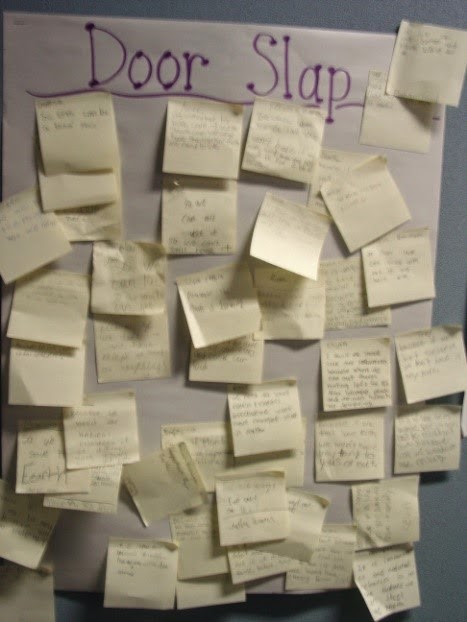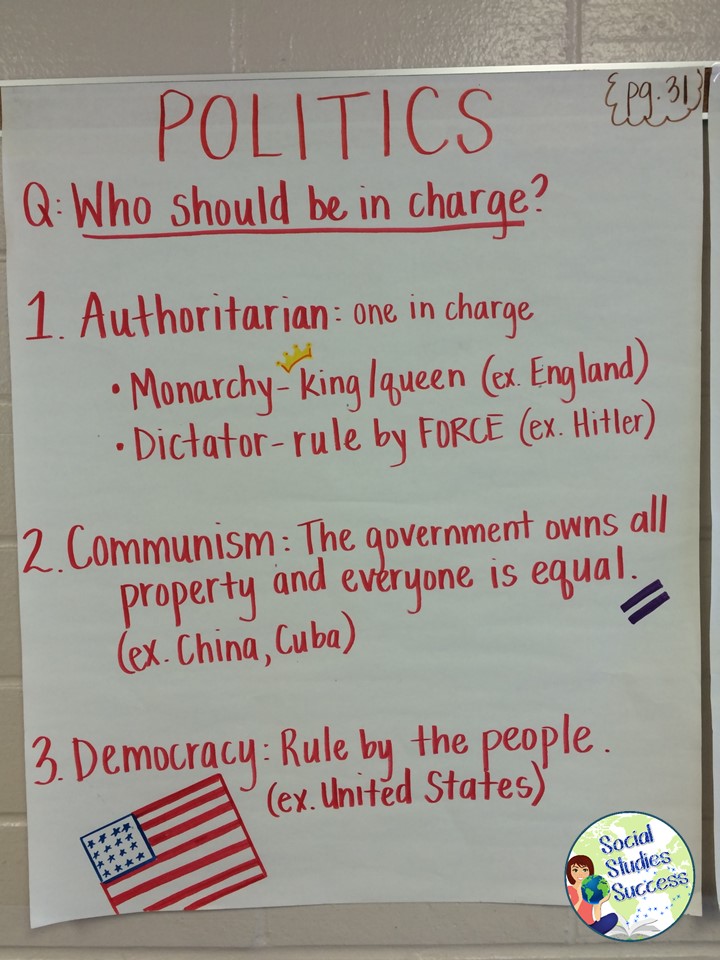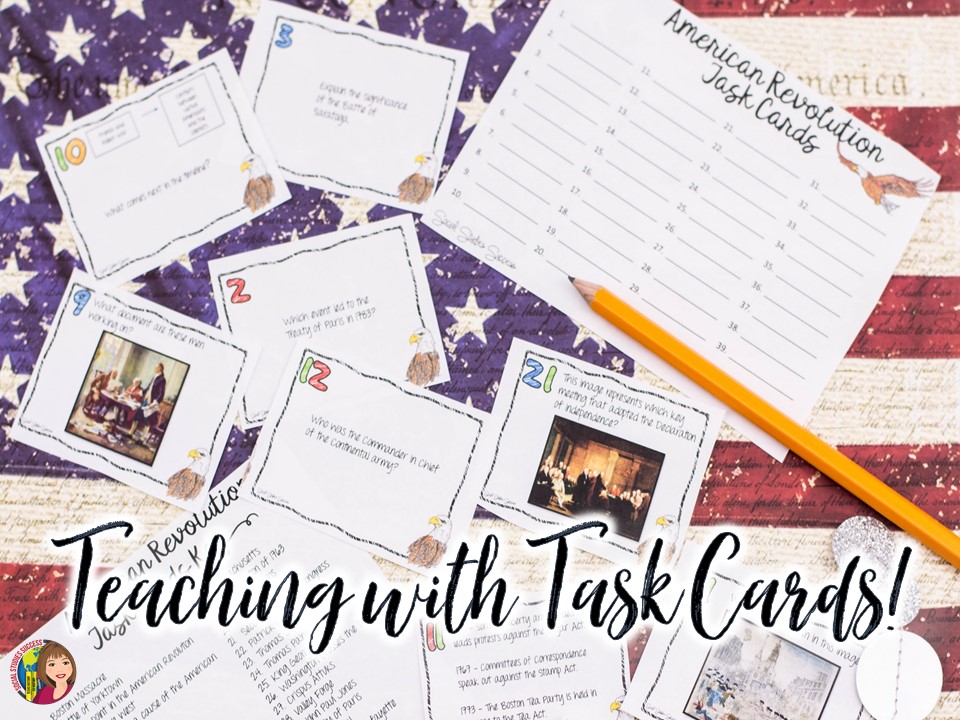Abolitionist, expedition, alliance, excerpt – all of these are words your students are expected to read and understand in Social Studies. Vocabulary instruction has become more and more important as our children are required to read and comprehend more challenge text – both in the classroom and on state assessments.
When you are approaching vocabulary instruction you must keep in mind that students will struggle with both brick and mortar words. Brick words refer to those terms that are key to content instruction. These can include the terms you find in your book as well as key terms to understand your content. Examples include: siege, lieutenant, continent, and filibuster. Mortar words refer to those terms that “glue” the brick words together. They are the words and phrases that are required to place the brick words into context. They bind terms together and are essential to reading and speaking comprehension. Mortar terms include: therefore, consequently, implications, and infer.
But how do you incorporate vocabulary instruction into your already busy day? You have to teach with INTENT! How are you spending your precious time? You already know that copying the vocabulary and definitions from the back of the book doesn’t work – so what does?
1. Images– images are essential for your ELL students to understand both brick (content) and mortar (academic) words. Social Studies vocabulary words can be easily represented by images – both student and teacher generated. Incorporate images into your word walls and you can use activities such as:
| Use Word Walls with Images to Improve Vocabulary Development |
· Be a Mind Reader Have a student give clues about a selected word while class members try to guess the word.
· Guess the Covered Word Write sentences on the board using the social studies word wall words and challenge students to guess which word belongs in each sentence.
· Find it First Call two students up to the word wall at a time. Call out the definition to a word; see which student can find it first.
· Seek and Find Challenge students to search newspapers, brochures, letters, business cards, etc. to highlight word wall words.
2. Movement– incorporate movement as much as possible into your vocabulary instruction. Can your kids act out the vocabulary words? Add some of these strategies to your toolkit:
· Memory Movement Assign each student a vocabulary term. They must create a physical movement to represent the definition. For example, the term alliance can be represented by two students shaking hands. Once the student has created their movement, they walk around the room teaching their term to other students. With each new term a student learns, they need to make the Memory Movement created.
· Act It Out Place all of the terms in an envelope. Challenge your students to pull a term out of the envelope and act out the definition.
3. Games– Play games with your students throughout your unit of instruction. Most of these games take less than 5 minutes of class time, and can constantly reinforce your vocabulary instruction.
· Tic Tac Connect How do your vocabulary terms connect to each other. Allow your students to create connections on a Tic Tac Toe board where they receive 1 point for each sentence they can make with connecting terms. For example: Entrepreneurs go into production of goods that can sell on the international trade market.
| How do these words connect to each other? |
· Multiple Match Allow students the opportunity to match a definition to a term to a picture. Once they have created their first match, mix the cards up again and challenge your students to match them again, but in a shorter time frame. They can do it in a minute, but can they make the match in 45 seconds? 30 seconds?

